Have you ever wondered why financial advisors and investment experts recommend staying invested for the long-term? What’s wrong with the short-term? Let’s take a look.
Coin toss game
Suppose we flip a coin for fun. If the coin lands on heads, you pay me $100. If the coin lands on tails, I pay you $110. Would you take that bet? Some people might say yes, but my guess is that most people would say no. Even though the expected value of the coin flip is positive (i.e. a 50% chance of a $100 loss + a 50% chance of a $110 gain = $5 expected gain), many people will look at that possible $100 loss and think “No way, too risky!” That’s what short-term investing is like. A whole lot of random risk.
Now let’s consider the same situation, but with a longer time horizon. Suppose that we flip the coin using the same payouts for each individual coin toss, but this time we must toss the coin 10,000 times before exchanging any money. Would that change your mind about the wager?
Here’s a table and a graph illustrating how the number of coin tosses will effect the outcome of the game:
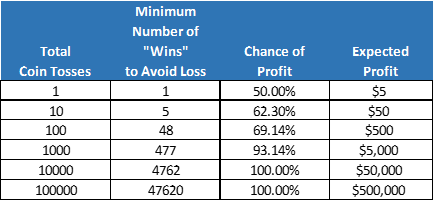
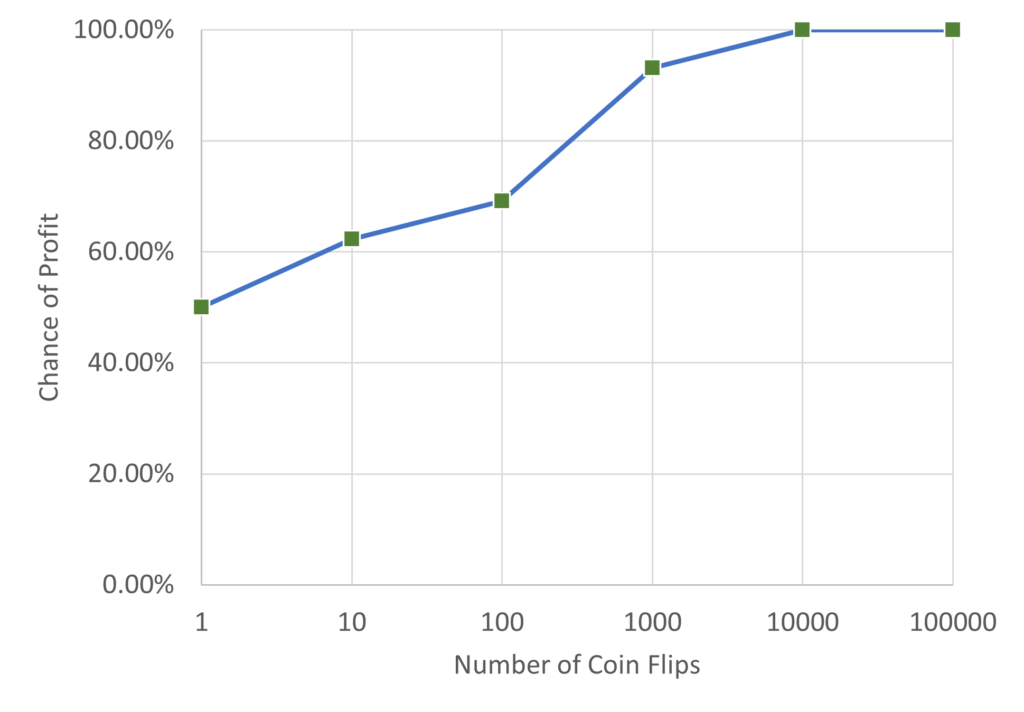
As you can see, if you toss the coin 10,000 times, a lot of the randomness disappears. In fact, you’re almost guaranteed to not lose money, and can expect to earn a substantial profit. Those extra coin flips can make a huge difference in your odds of success. With 10,000 coin tosses, you find yourself in a “heads I win, tails you lose” situation and you should take that bet every time.
Now to the stock market
So what does the coin toss game have to do with investing? Namely, it illustrates that time is on our side. You can think of every individual day in the stock market much like a coin toss… that is, for any given day, the market is about as likely to go down as it is to go up. Now if we extend our time horizon and take a long-term focus, we can boost the number of coin tosses in the game. And as with the coin toss game, our odds of success for investing in the stock market accelerate the longer we stay in the game.
The charts below paint a nice picture of how much time horizon matters. Pay special attention to the frequency and size of negative returns as the time horizon increases.
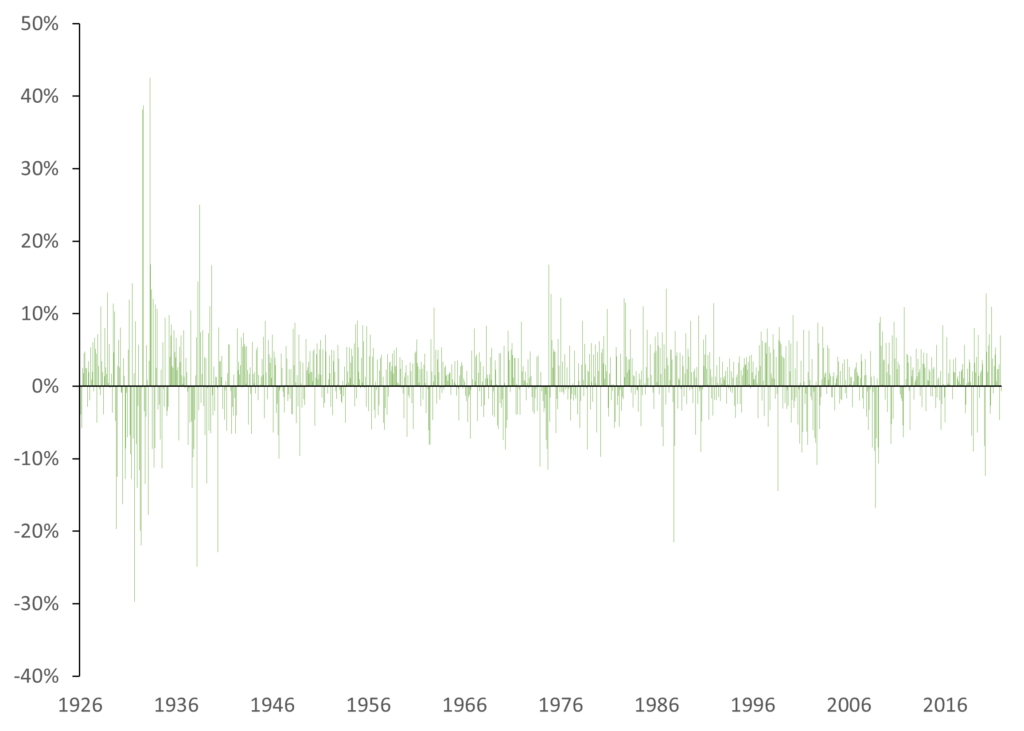
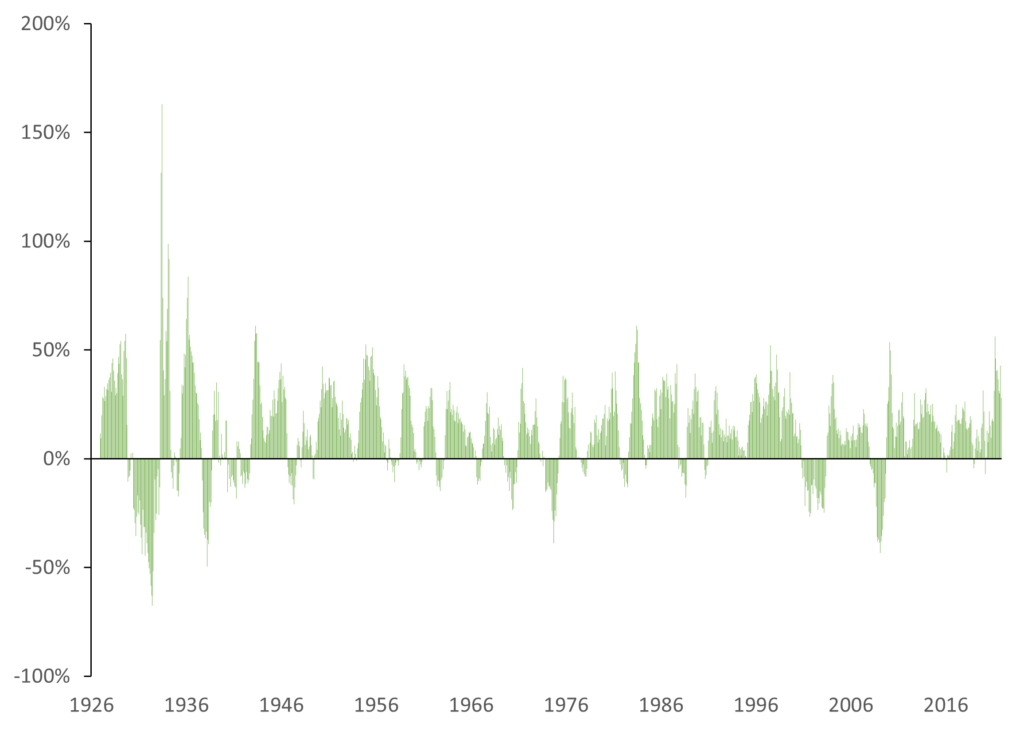
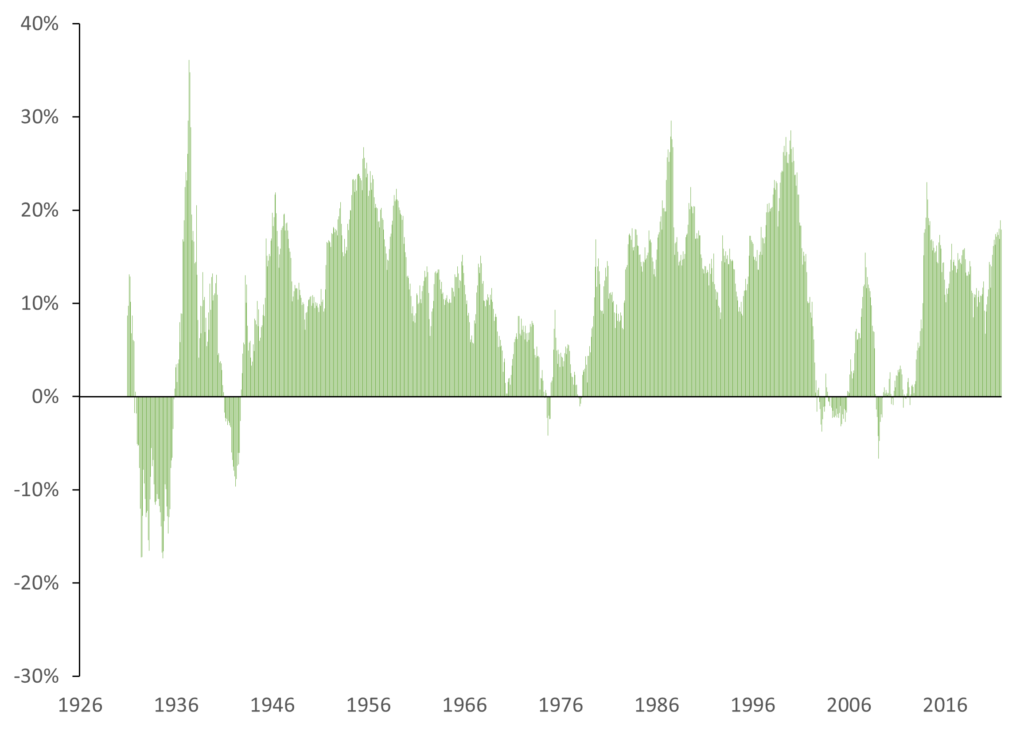
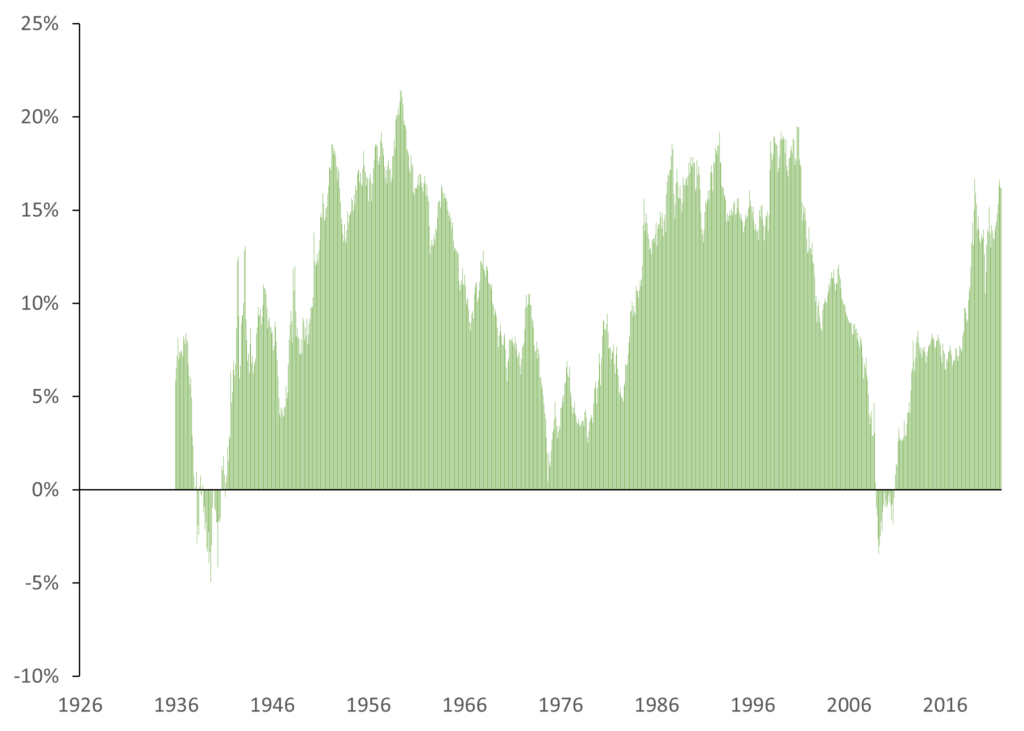
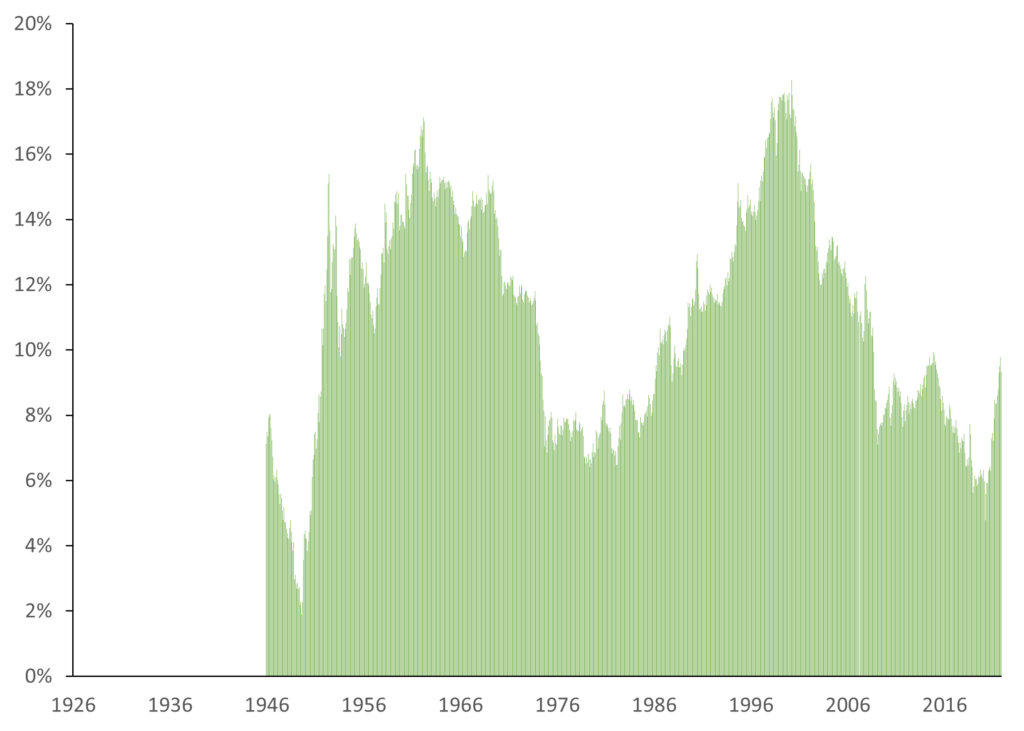

From top left to bottom right: 1 month, 1 year, 5 years, 10 years, 20 years, 30 years
For 1 month returns, the data looks very random and chaotic (i.e. like a single coin toss). Extend to a 10 year holding period and you’ll see only a handful of time periods where returns were negative. Extending again to a 20 or 30 year holding period, and there were no time periods with negative returns. This is the reason that Warren Buffett says his favorite holding period for investments is forever.
The next time you hear your financial advisor pound the table and insist on “staying invested for the long-term”, remember that as an investor, you want to wager not on one single coin toss or single day in the market, but as many as you possibly can. Do that and you could earn a powerful upgrade to your chances of future financial success.

